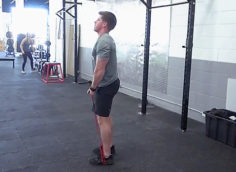A lot of people aren't working hard enough or smart enough to gain muscle. They're content to go into the gym and do their usual routine. They forget (or don't know) that muscle growth is an adaptive response. For it to occur, the body must be challenged up to a certain threshold. And to have constant progress, it's important to have a certain progression in the difficulty of the workouts.
10 Ways to Increase Difficulty
- Increase external loading: This is the obvious one: lift heavier weight. Sadly, it's the only progression method many use, and that will stifle their long-term progress.
- Increase volume: Do more reps while keeping the load the same. Example: Progressing from 10 reps at 200 pounds to 12 reps at 200 pounds.
- Increase volume by doing more total sets: This is often the traditional way of progression. And while it's true that adding more sets (if loading can be sustained) will cause more physiological damage, there's a point where the returns become negative. For example, progressing for three total sets per muscle group up to 9-12 total sets might spark new growth, but bumping it more than that could actually lead to stagnation and regression.
- Increase training density: Performing more work per unit of time. This is best accomplished by reducing the rest intervals between sets while maintaining external loading. Many coaches are now aware of this method. They train lifters to gradually reduce the rest intervals.
- Increase eccentric loading or work: The eccentric or negative portion of an exercise causes the most damage to the muscle fibers and thus carries a greater potential for growth stimulation. Fast twitch fibers (with the most growth potential) are preferentially recruited during eccentric work, making this doubly effective. You can increase eccentric stress either by slowing down the lowering portion of the movement or by increasing external loading by having a partner push down on the bar during the eccentric.
- Lift the weights faster: Force = mass x acceleration. You can thus increase force output either by lifting more weight or lifting the same load with greater acceleration. More force equals more intramuscular tension, which is one of the top factors involved in growth stimulation.
- Use more complex exercises: We're not talking about squatting on a stability ball here! Progressing from structurally simple exercises to more complex ones increases training stress. For example, a leg extension is easier than a leg press, which is easier than a squat.
- Use advanced training methods: Pre-fatigue, cluster sets, rest/pauses, drop sets, iso-dynamic contrasts, tempo contrast, etc. These can add training stress (and should thus not be abused) and represent a progression in the difficulty of a program. You can find info on all those methods here at T Nation. Just use the search function.
- Focus better: Never neglect the mental aspect of lifting. If you're training for strength and power, you need an efficient nervous system. If you're a bodybuilder, being able to focus on your muscles working will increase the efficacy of your sets. Basically, if you progress from just breezing through the exercises unconsciously to having 100% focus on each set, you have progressed.
- Stop wrecking yourself: Don't fall into the trap of excessive training and insufficient rest. How does this increase the difficulty of training? Simple. For dedicated lifters, it's often more difficult to recover than it is to pile on more work. Some lifters train excessively either by 1) doing too much volume per session, 2) training too often with a high volume, or 3) increasing the difficulty of their program too rapidly.
Inadequate rest or excessive training will lead to stagnation or even regression. So if it's difficult for you to rest, it probably means you need to rest. In the history of mankind, nobody has ever gotten stronger or bigger in the gym. You often leave the gym in a worse state than you were coming in. Your energy stores are depleted, your muscle fibers have suffered micro-trauma, and your nervous system is shot! So when do you grow? At the kitchen table and in your bed.





